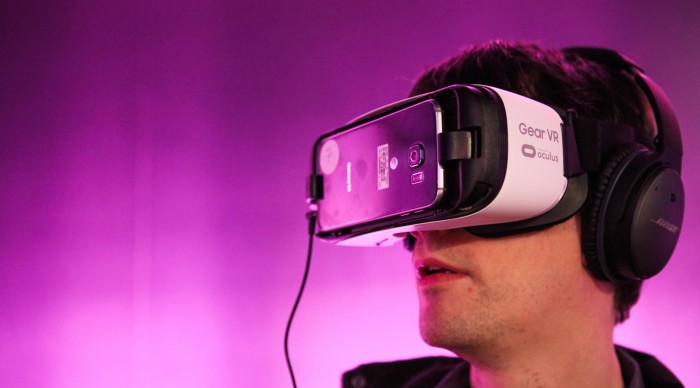Oculus Says Over a Million People Used Gear VR Headsets in April
Consumer virtual reality is still so new that we don’t know much about how it’s being used. But Oculus is sharing some details about the smartphone-dependent Gear VR headset it developed with Samsung—including the statistic that over a million people used it in April.
During a small media briefing Tuesday meant in part to show off some new content that will be coming out for Gear VR, Oculus’s head of mobile, Max Cohen, said, “We were not expecting to be at a million right now.”
Gear VR, which—unlike recently released higher-end headsets like Oculus Rift and HTC’s Vive—relies on one of several high-end Samsung smartphones to work, has been out since late 2014; a new version of it launched near the end of 2015. On its own, the headset costs $100. There are now more than 250 apps for it, many of them games and videos.
One factor that might have helped reach that usage mark: Samsung gave away the Gear VR and six games with preorders of its new Galaxy S7 and S7 Edge smartphones from late February through mid-March.

Cohen noted that people who are playing with Gear VR use it for about 25 minutes per day. He added that usage tends to increase over the holidays as those who own it share it with other people.
And video in particular is what a lot of people are doing with their Gear VR headsets. Eugene Wei, Oculus’s head of video, said that 80 percent of people who use the device watch videos, and that they will soon have watched more than three million hours of video cumulatively (Facebook, which owns Oculus, and Samsung have previously said that users had watched two million hours of video).
Keep Reading
Most Popular
Large language models can do jaw-dropping things. But nobody knows exactly why.
And that's a problem. Figuring it out is one of the biggest scientific puzzles of our time and a crucial step towards controlling more powerful future models.
The problem with plug-in hybrids? Their drivers.
Plug-in hybrids are often sold as a transition to EVs, but new data from Europe shows we’re still underestimating the emissions they produce.
Google DeepMind’s new generative model makes Super Mario–like games from scratch
Genie learns how to control games by watching hours and hours of video. It could help train next-gen robots too.
How scientists traced a mysterious covid case back to six toilets
When wastewater surveillance turns into a hunt for a single infected individual, the ethics get tricky.
Stay connected
Get the latest updates from
MIT Technology Review
Discover special offers, top stories, upcoming events, and more.